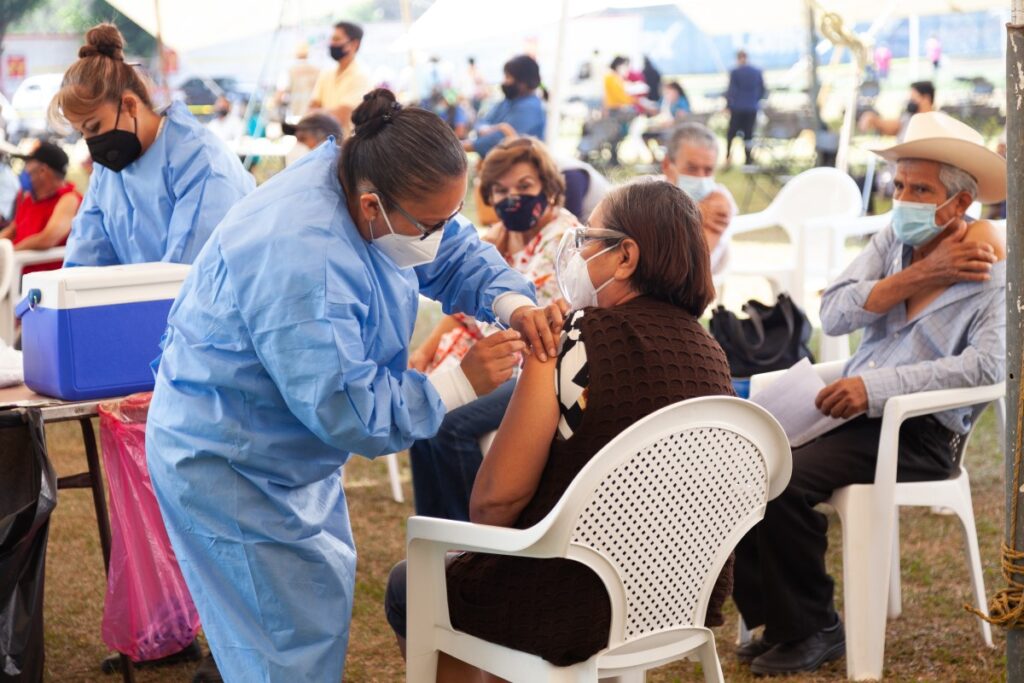
How technology enables public health equity
COVID-19 brought a variety of challenges to the US population. One of the most significant was reaching underprivileged, underserved, and undocumented communities for COVID-19 testing and vaccinations.
The California Health Medical Reserve Corps (CHMRC) is an authorized medical reserve corps that works to close gaps in care delivery between healthcare, public health, response organizations, payers, and community-based health organizations. With the power of Microsoft technology, CHMRC and non-profit organizations were able to deliver COVID-19 testing and vaccines to those in need at an unprecedented rate. In October 2022, the Microsoft team will join CHMRC at the 2022 ISM Annual Conference & Expo to discuss this topic, and much more.
Engaging with all residents
Rapidly changing federal, state, and local guidance and protocols for face-masking, social distancing, working remotely, and vaccination requirements meant that significant groups of the state’s population lacked the means or ability to comply. Identifying and addressing the real needs of underserved populations was especially challenging, necessitating innovative collaborations at the intersection of healthcare, public health, and community organizations. Engaging these residents required flexible, scalable, and secure information sharing and cooperation among a variety of agencies and health entities.
For instance, rapid drive-through mass testing and vaccination sites were created to quickly provide services to residents where it was needed most. There was also a need to provide support to those communities who may be hesitant, untrusting, or hard-to-reach.
“Trust is hard to build, and even harder to maintain and grow. Our population speaks many languages, have limited digital skills, lack cell phone, and internet access, and fear and distrust government and large institutions. Through the Microsoft solution, CHMRC was able to capture data, provide continuity of care, and enable these sites with supportive and necessary technology. Partnering with Microsoft enabled CHMRC to not only garner trust and be accountable to those most in need, but we are also now engaged with those communities and the organizations they trust on an ongoing basis.”—Dan Desmond, CHMRC Executive Director, MRC Director.
As the pandemic grew, California, like many other states and territories, faced a nearly insurmountable challenge with multiple regional immunization registries, reporting systems that had supported small outbreaks hit with millions of test results, and the digital divide between healthcare and public health requiring most case reports to be faxed and entered manually.
“CHMRC faced three challenges that the ‘technology first’ approach was not addressing: Privacy of individual information, support in rural locations with limited connectivity, and flexibility to adapt on the fly to meet community needs. Microsoft worked with us to quickly bring technology enabled care to those that needed it, rather than forcing them to come to large mass-vaccination sites.”—Dan Desmond, CHMRC Executive Director, MRC Director.
Responding at unprecedented speed
Because it was at the center of the crisis, CHMRC grasped the importance of data-coordination and feedback-sharing. It worked with state and local public health agencies to ensure that its new solution, Vaccines for All (V4A), addressed the gaps and took advantage of systems already in place.
“When COVID started, we realized that all the advanced technology and systems lacked the flexibility to adapt to the situation. Microsoft 365 E5 gave us the power, security, and flexibility to solve this challenge. Now, almost every feature in Microsoft 365 E5 has been used as we move beyond the pandemic to build stronger, healthier, and more resilient communities.”—Dan Desmond, CHMRC Executive Director, MRC Director.
The first phase of the V4A project was to improve inter-agency collaboration, boost COVID-19 test collection, distribute more rapid tests, and deliver education in non-clinical settings such as farms, churches, community centers, parks, and schools. Critical to the project was the ability to securely collect personal information and make it usable for legacy healthcare and public health systems.
The first phase of V4A successfully connected multiple systems and, with the help of Microsoft Azure Active Directory, set the stage for the second phase. The second phase benefited from several weeks of planning and preparation as access to COVID-19 vaccinations expanded beyond healthcare workers and those at critical risk. Meanwhile, COVID-19 testing needs expanded as a requirement or vaccination alternative to resume work or attend events.
The three key components of V4A Phase Two were:
- Enhance Microsoft Vaccine Management (MVM) to support walk-up and ad-hoc vaccinations in addition to the existing capabilities for mass vaccination sites.
- Integrate MVM with the existing solution platform and quickly extend it to include a multi-language call center providing online support, registration to those without the capability, and identifying other needs such as scheduling transportation and providing clear, consistent messaging for public health to community partners.
- CHMRC participation in Vaccine Equity Consortium (VEC) started by Microsoft together with Easter Seals, United Way Worldwide, and other partners.
Moving forward
The value of the Vaccine Equity Initiative cannot be understated as it has brought lessons learned and best practices from across the country that helped to quickly expand and enhance the V4A Project. Other communities in California, Washington, Georgia, and Mississippi provided advice and valuable insights to CHMRC and the VEC. CHMRC, through the Vaccine Equity Consortium, is working now to make this technology platform available globally.
Today, V4A is entering its third phase: COVID Catch-Up. This phase expands healthcare services to include Medicaid enrollment, wellness checks, past-due vaccinations, and more.
Join us at the 2022 ISM Annual Conference & Expo
We invite you to attend the upcoming session on how technology enables health equity at the 2022 ISM Annual Conference & Expo. You will hear directly from CHMRC and Microsoft about how technology helps deliver essential health services to underserved, vulnerable, and disadvantaged populations. We’ll also demonstrate how the VEC public-private partnership model may serve as an operational model for addressing global healthcare disparities.
Learn more about CHMRC’s public health collaboration and Microsoft for Public Health and Social Services.




